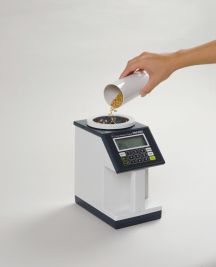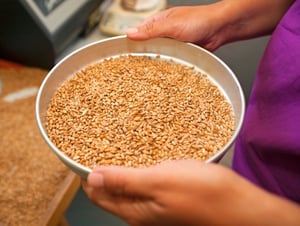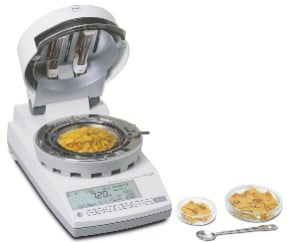 You may have found it to be a true challenge to store grain through the summer if you don’t know all the tricks of the agricultural trade. Storing a large amount of grain is a big investment, and if the slightest thing goes wrong, it can mean a big financial loss for you.
You may have found it to be a true challenge to store grain through the summer if you don’t know all the tricks of the agricultural trade. Storing a large amount of grain is a big investment, and if the slightest thing goes wrong, it can mean a big financial loss for you.
The combination of heat and humidity plus the possibility of insect infestations means that there are quite a few risks that go along with storing grain through the hottest days of summer. Here are a few ways to ensure that you are storing your grain safely and carefully, so you don’t end up with any nasty surprises once fall arrives.
Temperature
Warmer temperatures make it easier for mold to grow and for insects to make their way into the bins to enjoy the grain for themselves. You can prevent these issues by storing your grain at cooler temperatures, which can sometimes be a challenge in the heat of summer.
Keeping grain cool through the summer can make a big impact on its storage life. In fact, for every 10 degrees your grain’s temperature increases, the storage time is cut practically in half. This means that grain that could feasibly be stored for 9 months at 60℉ is only viable for 5 months at 70℉, and 3 months at 80℉. The warmer the grain is, the more likely it is to produce mold or harbor unwanted pests. Keeping the grain cool is very important.
One way to keep the grain’s temperature in check is to use temperature sensors throughout various parts of the storage bin. Since the sensors only register the temperature of the grain immediately surrounding it, having sensors throughout the bin and monitoring them closely is key to keeping the temperature in check.
Moisture Content
One of the easiest, and very best ways to preserve your grain during summer storage is to monitor its moisture content from start to finish. To begin, your grain should be properly dried, and at a lower level of moisture than if it were only being stored in the fall and winter. This is because the combination of heat and moisture is much more likely to cause spoilage.
There are varying levels of moisture required for storing each type of grain in warmer months; soybeans require a different level of moisture content than wheat, barley, or corn,, but grain should be dried to the correct level of moisture before storing if it’s expected to last through the summer.
 Once the grain is dried, it must be carefully checked throughout the summer to be sure it isn’t exposed to additional moisture. Increasing moisture levels can be a sign of spoilage. Taking readings on a regular basis (even daily, if you’re worried about moisture issues) is the best way to be sure your grain isn’t exposed to too much moisture. Using one of Kett's instant moisture and composition analyzers makes this amount of testing painless!
Once the grain is dried, it must be carefully checked throughout the summer to be sure it isn’t exposed to additional moisture. Increasing moisture levels can be a sign of spoilage. Taking readings on a regular basis (even daily, if you’re worried about moisture issues) is the best way to be sure your grain isn’t exposed to too much moisture. Using one of Kett's instant moisture and composition analyzers makes this amount of testing painless!
The most important thing about taking regular readings of the moisture content of your stored grain, especially in the summer when humidity is a constant battle, is to use of a reliable, accurate moisture meter that you know will give you correct readings time and time again. You’ll want to be sure you have the best grain moisture meter for your needs, so you can be confident in knowing that your moisture meter will give you the best readings possible as you store grain season after season.
Aeration
One of the most challenging things about storing grain through the summer is the storage bin itself. Being made from metal, solar energy, especially atop the bin can heat the bin and the grain inside, putting the grain at risk of spoilage. The laws of convection heat up from the metal sides of the bin and along the roof, potentially “cooking” your grain, allowing for mold growth and insect infestations.
A great way to combat this issue is with aeration and ventilation at the top of the bin. Ventilating the space between the roof of the bin and the top of the grain will help to keep the grain free of heat and moisture. Operating a cooling fan during several cool, dry mornings every few weeks will help keep air flow going and your grain cool.
Grain Quality
 Grain that has not experienced physical damage is much more likely to last storage through the summer months and have a longer storage life. Because of this, grain that has been exposed to frost, is immature, or of a poor quality is not as strong of a candidate for summer storage.
Grain that has not experienced physical damage is much more likely to last storage through the summer months and have a longer storage life. Because of this, grain that has been exposed to frost, is immature, or of a poor quality is not as strong of a candidate for summer storage.
One way to tell if a grain is immature or poor quality is its test weight. If the test weight is low, then the storage life of the grain will be low as well. For example, corn that is low in weight can only be stored for about half the amount of time as corn that is quality, mature grain. One of Kett's rice quality analyzers makes quantification of grain quality quick and efficient.
Because of this, if you are planning to store grain over the summer, it’s vital to choose grain that is mature and high-quality for best results and maximum storage time.
Looking for more assistance in keeping your grain fresh even through summer? Moisture is going to be your biggest battle, so perhaps a new moisture meter is the way to go. Let us help you find the perfect meter to meet all of your summer grain storage needs. Contact us today so we can set you up with the right meter for you.



